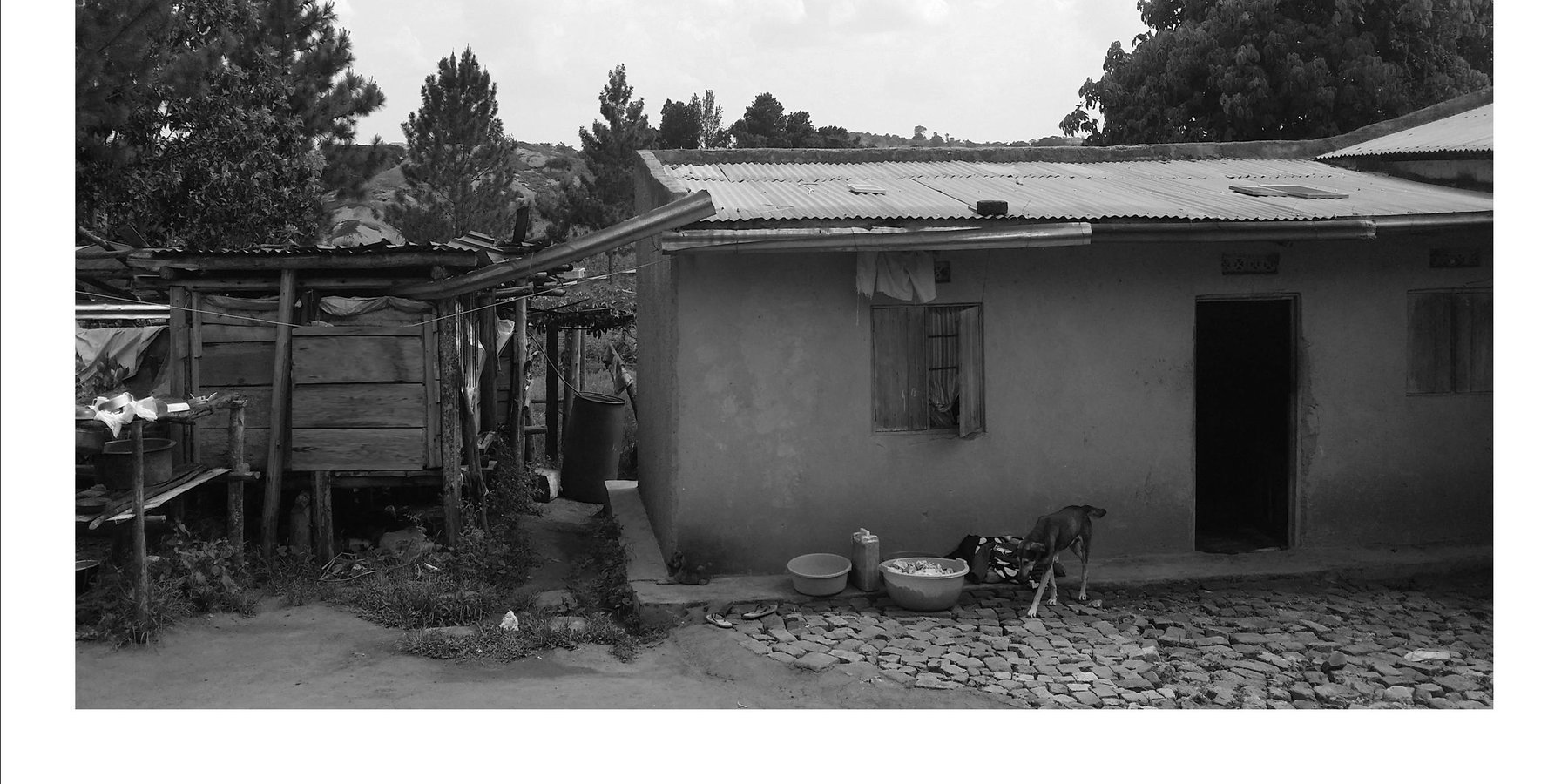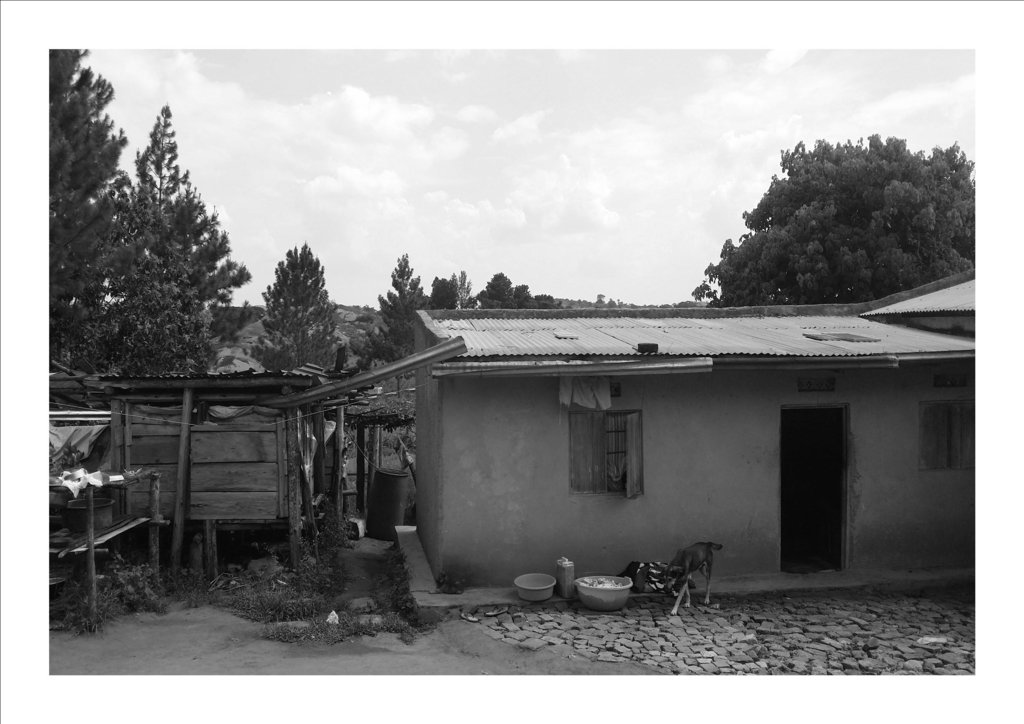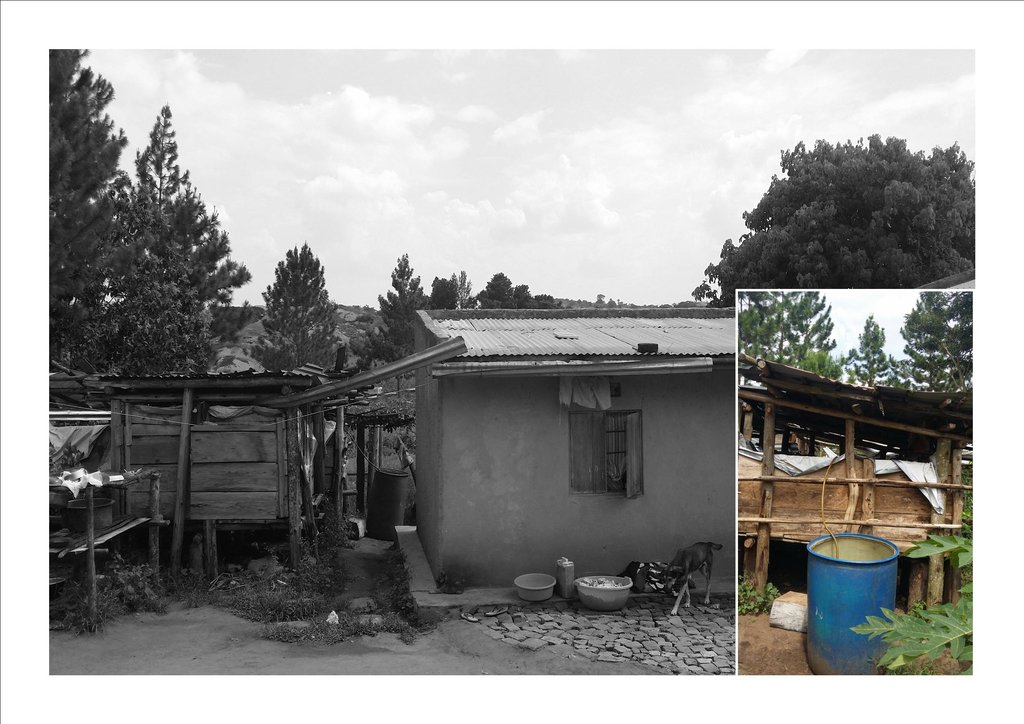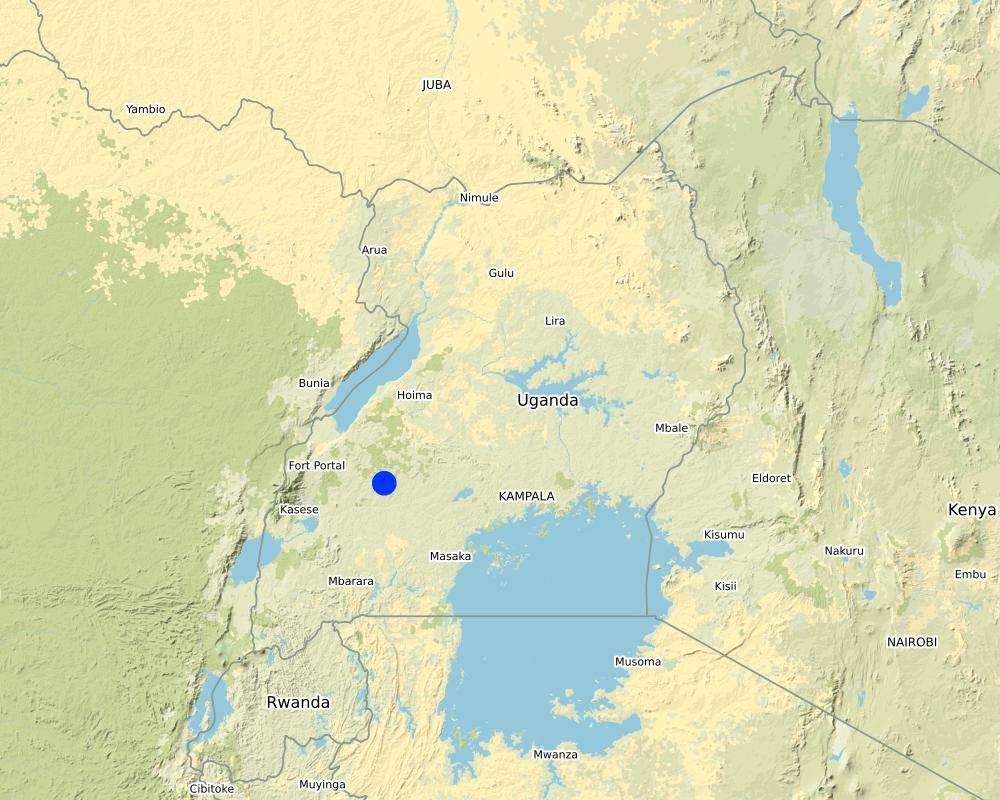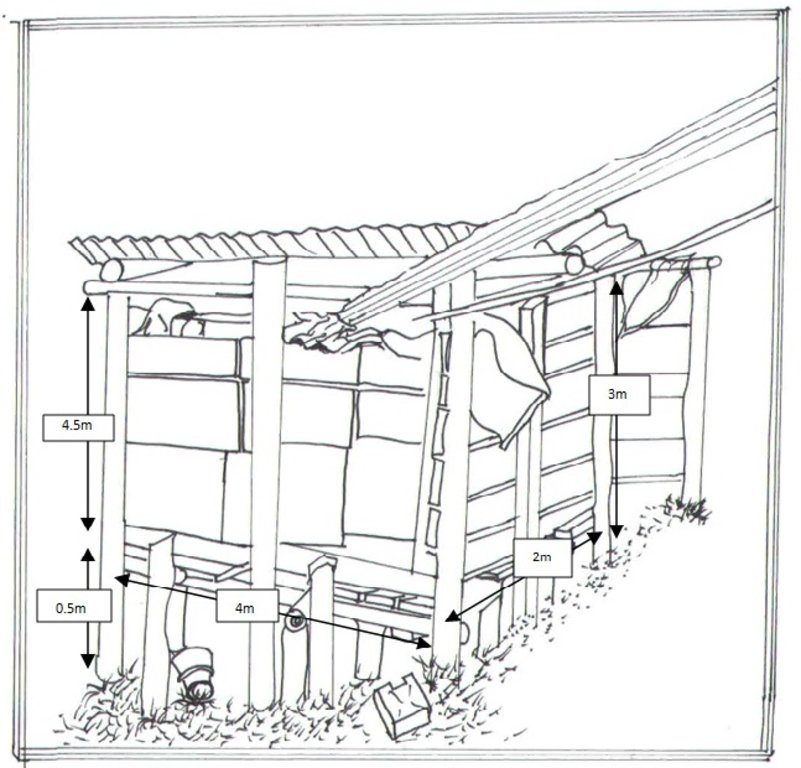Wooden water reservoir for rain water harvesting. [乌干达]
- 创建:
- 更新:
- 编制者: Aine Amon
- 编辑者: Kamugisha Rick Nelson
- 审查者: Nicole Harari, Udo Höggel
Okutagila amizi aha ibati
technologies_3301 - 乌干达
查看章节
全部展开 全部收起1. 一般信息
1.2 参与该技术评估和文件编制的资源人员和机构的联系方式
关键资源人
土地使用者:
Kabanda Deo
Mubende, Mubende Municipality
乌干达
有助于对技术进行记录/评估的项目名称(如相关)
Scaling-up SLM practices by smallholder farmers (IFAD)有助于对技术进行记录/评估的机构名称(如相关)
National Agricultural Research Organisation (NARO) - 乌干达1.3 关于使用通过WOCAT记录的数据的条件
(现场)数据是什么时候汇编的?:
13/11/2017
编制者和关键资源人员接受有关使用通过WOCAT记录数据的条件。:
是
1.4 所述技术的可持续性声明
这里所描述的技术在土地退化方面是否存在问题,导致无法被认为是一种可持续的土地管理技术?:
否
注释:
The reservoir is established out of natural and local materials available to community members and stores relatively clean/safe water for future use.
1.5 请参阅有关SLM方法的问卷
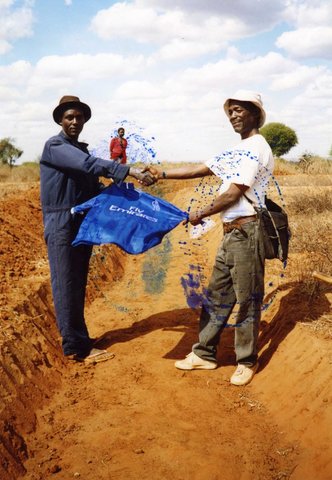
water harvesting [肯尼亚]
Water harvesting for agricultural production in ASALS.
- 编制者: Philippe Zahner
2. SLM技术的说明
2.1 技术简介
技术定义:
A gutter system constructed on the farmer’s house-roof collects rainwater and directs it into a constructed reservoir raised off the ground with interior walls lined with water-proof tarpaulin. The reservoir has a maximum capacity of 8,000 liters of water; clean enough for irrigation, livestock and domestic use during seasons of scarcity. The reservoir is raised off of ground to minimize contamination and any possible accidents.
2.2 技术的详细说明
说明:
The wooden water reservoir system was introduced to the farmer by staff of the area's local government as a demonstration site to educate others on how to cheaply harvest and store rainwater in a relatively clean form for domestic, livestock and irrigation use. The farmer’s house was fitted with gutters to tap rainwater and direct it into the water reservoir. The water collected is used to buffer the water scarcity during the dry season, which normally stresses livestock and crops in the area. The water can be stored for as long as three months, depending on the size of the water reservoir and the use of the water.
The establishment of the technology requires a clean roof for collecting rainwater, gutters, poles, iron sheets, tarpaulin, hose pipe, jerry can and nails. Further equipment required include; a hammer, hoe and panga (large knife for weeding and forest works). At the farm in Kyegegwa, the reservoir is constructed 3 meters away from the farmer’s main house located at the top of a gently sloping hill. The establishment process involves: leveling of the site on which the technology is planned and constructing a water reservoir supported by a wooden structure. The support structure is constructed using four poles made in such a way that the two front poles are taller (5m) while the two poles behind are shorter (3m). This will give the roof a slight slope to prevent rainwater from stagnating on the roof. A raised rectangular floor supported by the poles is then established at a height of 0.5m above ground. The rectangular reservoir base dimensions are 1m×4m×2m (h×l×w) and is divided into 4 compartment. Each of these, lined with water-tight tarpaulin, can hold 2000 litres of water. The water so collected in the reservoir can be extracted under gravity through a 1.5cm diameter hose pipe into a jerry can placed below the reservoir.
The cost of establishment and durability of this rainwater harvesting system is mainly dependent on the type of materials and gutters used. In Kyegegwa District, wood for construction of the system is locally available valued at US$ 67.99 for the construction of the reservoir system. The iron sheets, gutters and nails are acquired from Kyegegwa Town where they are valued at US$ 127.28. The labor required is also locally available where it takes four men to establish the structure at a total cost of US$ 17.95 in three days.
The water reservoir is semi-permanent and can last for about 1.5 years depending on the quality of materials used. The maintenance activities include cleaning of the reservoir every month and repairing of the worn out parts at the end of the wet season. The farmer strongly recommends the technology since most of the materials and labour used are relatively cheap and locally available. The reservoir is raised off the ground to reduce contamination and minimize possible accidents with children and livestock. Despite the open space above the water level and the roof, the farmer has observed that the reservoir does not breed obnoxious vectors like mosquitoes. The water collected is relatively clean and the farmer uses it for irrigation of home gardens and for watering of livestock. When properly filtered it is as well used for domestic purposes. The technology can be improved by using treated poles, stronger wood material and tarpaulin of improved quality.
2.3 技术照片
关于照片的一般说明:
The black and white view shows the water system including the house roof, improvised iron sheet gutters and water reservoir structure. The colored picture shows a hose pipe connected into the reservoir to deliver water into the plastic tank by forces of gravity
2.4 技术视频
日期:
13/11/2017
位置:
Kyeggegwa Town Council
摄影师的名字:
Amon Aine
2.5 已应用该技术的、本评估所涵盖的国家/地区/地点
国家:
乌干达
区域/州/省:
Western
有关地点的进一步说明:
Kyeggegwa
注释:
The project is located at the top of a gently sloping hill
Map
×2.6 实施日期
注明实施年份:
2015
2.7 技术介绍
详细说明该技术是如何引入的:
- 通过项目/外部干预
注释(项目类型等):
Local Government project to help local farmers adopting water storage systems for use during drought.
3. SLM技术的分类
3.1 该技术的主要目的
- 改良生产
- 降低灾害风险
- 适应气候变化/极端天气及其影响
- 创造有益的经济影响
3.2 应用该技术的当前土地利用类型

定居点、基础设施
- 定居点、建筑物
注释:
The farmer's house roof top is used as the rain water catchment area.
3.3 有关土地利用的更多信息
该技术所应用土地的供水:
- 混合雨水灌溉
每年的生长季节数:
- 2
具体说明:
March-May and Sept-Nov. However, due to climate change, the seasons vary significantly in length and amount of rain recieved.
3.4 该技术所属的SLM组
- 集水
3.5 技术传播
具体说明该技术的分布:
- 适用于特定场所/集中在较小区域
3.6 包含该技术的可持续土地管理措施

结构措施
- S6:墙、障碍物、栅栏、围墙
- S7:集水/供水/灌溉设备
3.7 该技术强调的主要土地退化类型

水质恶化
- Ha:干旱化
注释:
To provide safe water for domestic, livestock and irrigation use especially during the drought period.
3.8 防止、减少或恢复土地退化
具体数量名该技术与土地退化有关的目标:
- 防止土地退化
- 适应土地退化
注释:
Harvesting rain water reduces the need for constructing dams.
4. 技术规范、实施活动、投入和成本
4.1 该技术的技术图纸
4.2 技术规范/技术图纸说明
The support structure is constructed using four poles made in such a way that the two front poles are taller (5 m) while the two poles behind are shorter (3 m), giving the roof a slight slope to prevent rainwater from stagnating on the roof. A raised rectangular floor supported by the poles is then established at a height of 0.5 m above ground. A cuboid reservoir of dimensions 1 m×4 m×2 m (h×l×w) is constructed with wooden panels; divided into four compartments and placed on the rectangular floor. Each compartment, to hold 2,000 liter of water, is lined with water-tight tarpaulin. Water from the reservoir can be extracted under gravity through a 1.5 cm diameter hose pipe into a jerry can placed below the reservoir.
4.3 有关投入和成本计算的一般信息
具体说明成本和投入是如何计算的:
- 每个技术单元
指定单位:
Water Reservior
指定体积、长度等(如果相关):
Capacity 8000 liters, segregated into 4 compartments
其它/国家货币(具体说明):
Uganda shillings
注明美元与当地货币的汇率(如相关):1美元=:
3638.35
注明雇用劳工的每日平均工资成本:
20000
4.4 技术建立活动
| 活动 | 措施类型 | 时间 | |
|---|---|---|---|
| 1. | Site selection | 结构性的 | Before onset of rain |
| 2. | Clearing and leveling | 结构性的 | Before onset of rain |
| 3. | Erection of poles | 结构性的 | Before onset of rain |
| 4. | Establishment of floor, walls and roofing | 结构性的 | Before onset of rain |
| 5. | Establishment of taupline and gutters | 结构性的 | Before onset of rain |
4.5 技术建立所需要的费用和投入
| 对投入进行具体说明 | 单位 | 数量 | 单位成本 | 每项投入的总成本 | 土地使用者承担的成本% | |
|---|---|---|---|---|---|---|
| 劳动力 | Builders | Man day | 8.0 | 22500.0 | 180000.0 | 100.0 |
| 设备 | Hammer | pieces | 30000.0 | 1.0 | 30000.0 | 100.0 |
| 设备 | Panga | pieces | 9000.0 | 1.0 | 9000.0 | 100.0 |
| 设备 | Dibber | pieces | 15000.0 | 1.0 | 15000.0 | 100.0 |
| 设备 | Hoe | pieces | 10000.0 | 1.0 | 10000.0 | 100.0 |
| 植物材料 | Spade | pieces | 15000.0 | |||
| 植物材料 | Poles | pieces | 12.0 | 3000.0 | 36000.0 | 100.0 |
| 植物材料 | Timber | pieces | 12.0 | 10000.0 | 120000.0 | 100.0 |
| 植物材料 | Wood | pieces | 8.0 | 1500.0 | 12000.0 | 100.0 |
| 施工材料 | Tarpaulin | peices | 1.0 | 45000.0 | 45000.0 | |
| 施工材料 | Iron sheet | peices | 6.0 | 25000.0 | 150000.0 | |
| 施工材料 | Nails | Kg | 4.0 | 6000.0 | 24000.0 | |
| 施工材料 | Hose pipe | Meters | 3.0 | 3000.0 | 9000.0 | |
| 施工材料 | Wood and poles | Pieces | 50.0 | 4900.0 | 245000.0 | |
| 技术建立所需总成本 | 885000.0 | |||||
如果土地使用者负担的费用少于100%,请注明由谁负担其余费用:
Kyegegwa District Local Government Community Development Fund.
注释:
The poles and wood are from the farmer's forest. The labor used was also family labor.
4.6 维护/经常性活动
| 活动 | 措施类型 | 时间/频率 | |
|---|---|---|---|
| 1. | Cleaning the reservoir/ tarpaulin and unblocking gutters | 管理 | Twice in the wet season |
| 2. | Renovation of the structure | 结构性的 | Once a year |
| 3. | Replacement of the taupline | 结构性的 | Once a year |
4.7 维护/经常性活动所需要的费用和投入(每年)
| 对投入进行具体说明 | 单位 | 数量 | 单位成本 | 每项投入的总成本 | 土地使用者承担的成本% | |
|---|---|---|---|---|---|---|
| 劳动力 | Men | 2.0 | 20000.0 | 40000.0 | 100.0 | |
| 设备 | Hose pipe | meters | 3.0 | 2000.0 | 6000.0 | 100.0 |
| 设备 | Jerrycans | 20litres | 2.0 | 9000.0 | 18000.0 | 100.0 |
| 施工材料 | Poles | pieces | 6.0 | 3000.0 | 18000.0 | 100.0 |
| 施工材料 | Timber | pieces | 6.0 | 10000.0 | 60000.0 | 100.0 |
| 施工材料 | Wood | pieces | 5.0 | 1500.0 | 7500.0 | 100.0 |
| 技术维护所需总成本 | 149500.0 | |||||
如果土地使用者负担的费用少于100%,请注明由谁负担其余费用:
Kyegegwa District Local Government
4.8 影响成本的最重要因素
描述影响成本的最决定性因素:
The nature of material used for example wood or metal and the labor hired to construct the system.
5. 自然和人文环境
5.1 气候
年降雨量
- < 250毫米
- 251-500毫米
- 501-750毫米
- 751-1,000毫米
- 1,001-1,500毫米
- 1,501-2,000毫米
- 2,001-3,000毫米
- 3,001-4,000毫米
- > 4,000毫米
有关降雨的规范/注释:
The rain seasons run from March-May and Sept-Nov.
农业气候带
- 潮湿的
5.2 地形
平均坡度:
- 水平(0-2%)
- 缓降(3-5%)
- 平缓(6-10%)
- 滚坡(11-15%)
- 崎岖(16-30%)
- 陡峭(31-60%)
- 非常陡峭(>60%)
地形:
- 高原/平原
- 山脊
- 山坡
- 山地斜坡
- 麓坡
- 谷底
垂直分布带:
- 0-100 m a.s.l.
- 101-500 m a.s.l.
- 501-1,000 m a.s.l.
- 1,001-1,500 m a.s.l.
- 1,501-2,000 m a.s.l.
- 2,001-2,500 m a.s.l.
- 2,501-3,000 m a.s.l.
- 3,001-4,000 m a.s.l.
- > 4,000 m a.s.l.
说明该技术是否专门应用于:
- 不相关
5.3 土壤
平均土层深度:
- 非常浅(0-20厘米)
- 浅(21-50厘米)
- 中等深度(51-80厘米)
- 深(81-120厘米)
- 非常深(> 120厘米)
土壤质地(表土):
- 中粒(壤土、粉土)
土壤质地(地表以下> 20厘米):
- 中粒(壤土、粉土)
表土有机质:
- 中(1-3%)
5.4 水资源可用性和质量
地下水位表:
> 50米
地表水的可用性:
中等
水质(未处理):
不良饮用水(需要处理)
水的盐度有问题吗?:
否
该区域正在发生洪水吗?:
否
5.5 生物多样性
物种多样性:
- 中等
栖息地多样性:
- 中等
5.6 应用该技术的土地使用者的特征
定栖或游牧:
- 定栖的
生产系统的市场定位:
- 生计(自给)
非农收入:
- 收入的10-50%
相对财富水平:
- 平均水平
个人或集体:
- 个人/家庭
机械化水平:
- 手工作业
性别:
- 男人
土地使用者的年龄:
- 老年人
5.7 应用该技术的土地使用者拥有或租用的平均土地面积
- < 0.5 公顷
- 0.5-1 公顷
- 1-2 公顷
- 2-5公顷
- 5-15公顷
- 15-50公顷
- 50-100公顷
- 100-500公顷
- 500-1,000公顷
- 1,000-10,000公顷
- > 10,000公顷
这被认为是小规模、中规模还是大规模的(参照当地实际情况)?:
- 中等规模的
5.8 土地所有权、土地使用权和水使用权
土地所有权:
- 个人,有命名
土地使用权:
- 个人
用水权:
- 社区(有组织)
- 个人
5.9 进入服务和基础设施的通道
健康:
- 贫瘠
- 适度的
- 好
教育:
- 贫瘠
- 适度的
- 好
技术援助:
- 贫瘠
- 适度的
- 好
就业(例如非农):
- 贫瘠
- 适度的
- 好
市场:
- 贫瘠
- 适度的
- 好
能源:
- 贫瘠
- 适度的
- 好
道路和交通:
- 贫瘠
- 适度的
- 好
饮用水和卫生设施:
- 贫瘠
- 适度的
- 好
金融服务:
- 贫瘠
- 适度的
- 好
6. 影响和结论性说明
6.1 该技术的现场影响
社会经济效应
生产
作物生产
作物质量
饲料生产
饲料质量
畜牧生产
木材生产
森林/林地质量
非木材林业生产
生产故障风险
产品多样性
生产区域
土地管理
水资源可用性和质量
饮用水的可用性
SLM之后的数量:
80000 litres in storage by end of the wet season
饮用水的质量
注释/具体说明:
The water stored in the tank is relatively clean compared to that harvested previously using the run off harvest system.
家畜用水的可用性
家畜用水的质量
灌溉用水的可用性
灌溉用水的质量
收入和成本
农业投入费用
注释/具体说明:
Costs on irrigation and income from extended growing seasons
农业收入
收入来源的多样性
经济差异
工作量
社会文化影响
食品安全/自给自足
健康状况
注释/具体说明:
Improved nutrition since the irrigation water supports growth of vegetables
文化机会
娱乐机会
社区机构
生态影响
水循环/径流
水的回收/收集
地表径流
多余水的排放
土壤
土壤水分
注释/具体说明:
Through irrigation in the dry season
养分循环/补给
注释/具体说明:
The water facilitates dissolution of nutrients
土壤有机物/地下C
酸度
生物多样性:植被、动物
植被覆盖
生物量/地上C
植物多样性
外来入侵物种
动物多样性
减少气候和灾害风险
干旱影响
6.2 该技术的场外影响已经显现
水资源可用性
缓冲/过滤能力
6.3 技术对渐变气候以及与气候相关的极端情况/灾害的暴露和敏感性(土地使用者认为的极端情况/灾害)
气候有关的极端情况(灾害)
气候灾害
| 该技术是如何应对的? | |
|---|---|
| 干旱 | 好 |
其他气候相关的后果
其他气候相关的后果
| 该技术是如何应对的? | |
|---|---|
| 延长生长期 | 好 |
| Livestock and domestic water | 好 |
6.4 成本效益分析
技术收益与技术建立成本相比如何(从土地使用者的角度看)?
短期回报:
积极
长期回报:
积极
技术收益与技术维护成本/经常性成本相比如何(从土地使用者的角度看)?
短期回报:
非常积极
长期回报:
非常积极
6.5 技术采用
- 1-10%
在所有采用这项技术的人当中,有多少人是自发地采用该技术,即未获得任何物质奖励/付款?:
- 50-90%
6.6 适应
最近是否对该技术进行了修改以适应不断变化的条件?:
是
其它(具体说明):
Limited finances
具体说明技术的适应性(设计、材料/品种等):
The farmer improvised iron sheets as gutters to collect water from the roof into the reservoir.
6.7 该技术的优点/长处/机会
| 土地使用者眼中的长处/优势/机会 |
|---|
| Most of the materials are cheap and locally available. |
| The establishment process is not so complex and can easily be learnt by the local workers. |
| The tarpaulin used is relatively cheap and long lasting. |
| 编制者或其他关键资源人员认为的长处/优势/机会 |
|---|
| The farmer easily benefits from 2 annual rainy seasons. |
| The system is raised off ground which minimizes contamination and accidents. |
| The water is kept in a relatively clean status for livestock, irrigation and domestic use. |
6.8 技术的弱点/缺点/风险及其克服方法
| 土地使用者认为的弱点/缺点/风险 | 如何克服它们? |
|---|---|
| The water system is open to contamination. | Need to construct a wall net to protect the water from contamination |
| The materials (wood) used are prone to destruction by insects which increases maintenance costs. | Use of metallic or concrete poles |
| 编制者或其他关键资源人员认为的弱点/缺点/风险 | 如何克服它们? |
|---|---|
| The taupline is a temporally reservoir that needs routine replacement. | Use of plastic materials or construction of concrete walls. |
| In case of infestation with insects like termites, the poles will suffer damage. | Use treated wood poles or metal poles. |
7. 参考和链接
7.1 信息的方法/来源
- 实地考察、实地调查
1
- 与土地使用者的访谈
1
7.2 参考可用出版物
标题、作者、年份、ISBN:
Rain Water Harvesting Handbook, Ministry of Water and Environment
可以从哪里获得?成本如何?
https://www.mwe.go.ug/sites/default/files/library/Rain%20Water%20Harvesting%20Handbook.pdf
7.3 链接到网络上可用的相关信息
标题/说明:
Rainwater Reservoirs above Ground Structures for Roof Catchment
URL:
http://www.itacanet.org/doc-archive-eng/water/Rainwater_reservoirs_GTZ.pdf
链接和模块
全部展开 全部收起链接

water harvesting [肯尼亚]
Water harvesting for agricultural production in ASALS.
- 编制者: Philippe Zahner
模块
无模块


